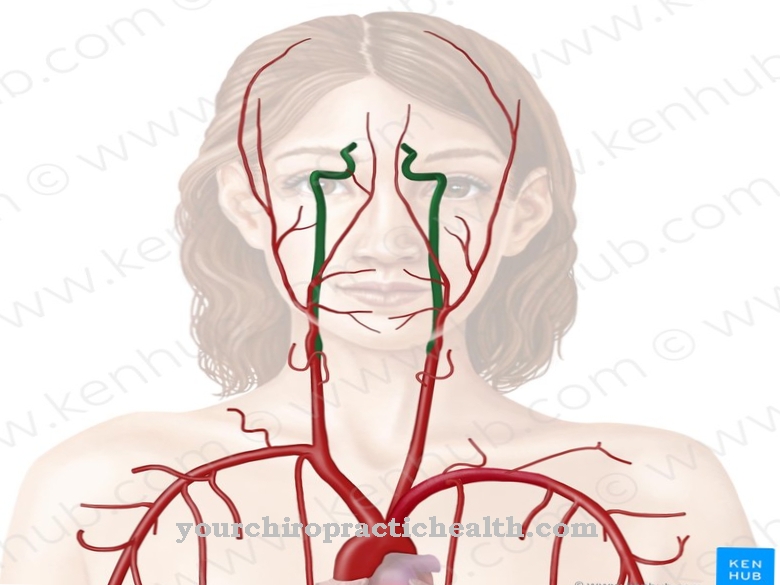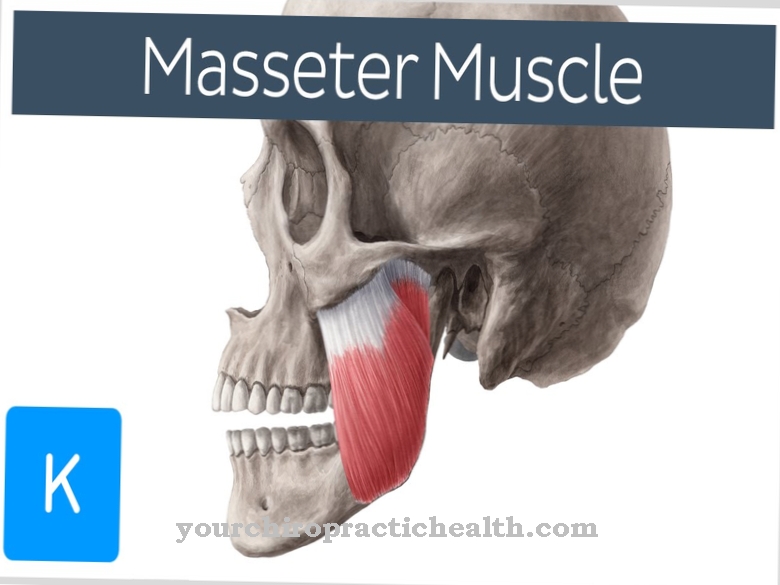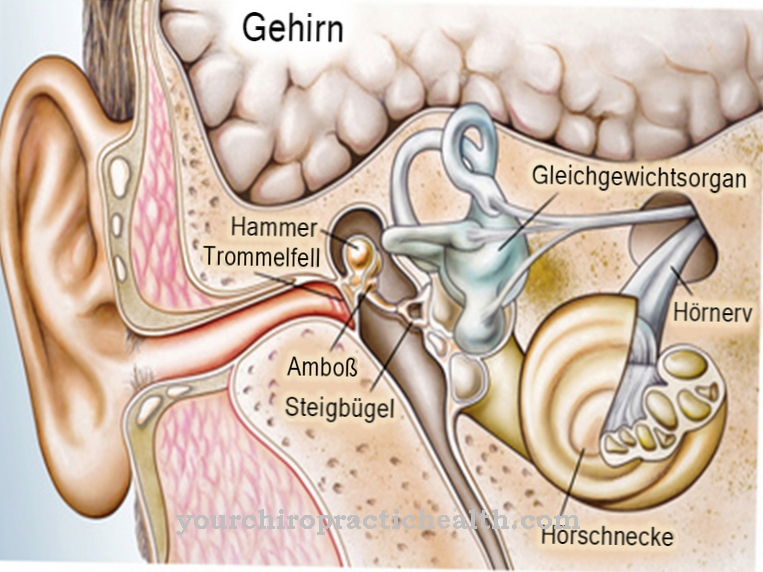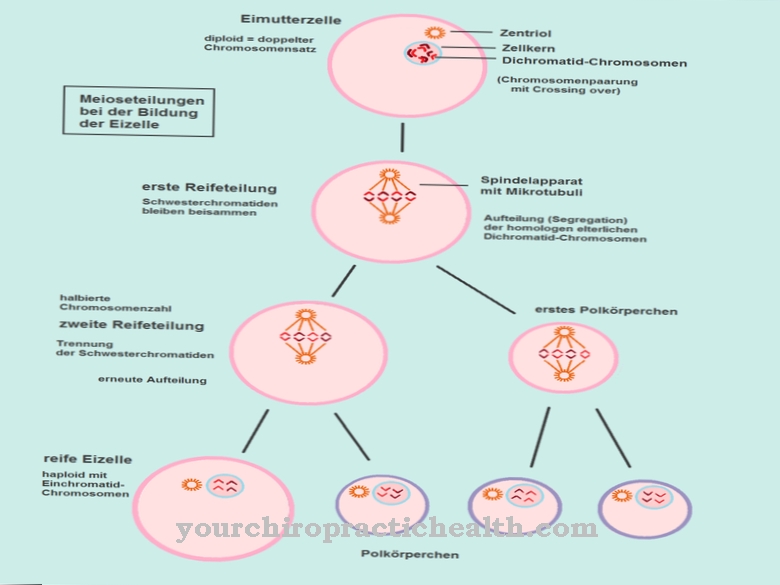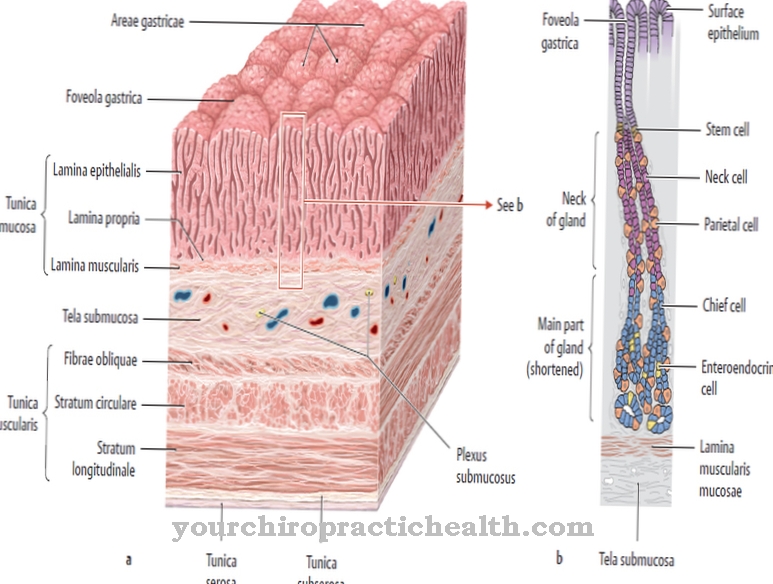The Periosteum (Periosteum) envelops every single bone in the body with the exception of the joint surfaces. In the area of the skull, the periosteum is called the pericranium. Inner surfaces of bones, for example long bones, are covered by a thinner skin called the endosteum or endosteum. The periosteum is heavily innervated and permeated with blood vessels. Its main task is to supply the bone and to support the metabolism in and on the bone.
What is periosteum?
The Periosteum (Periosteum) envelops every single bone in the body and ensures the necessary exchange of substances during the constant build-up and breakdown processes on and in the bones. In addition, the periosteum forms the connection between bones on the one hand and tendons and ligaments on the other. The periosteum is able to absorb the forces occurring at the points of articulation of tendons and ligaments because the skin with its outer, solid collagen layer is connected to the bones by a large number of elastic fibers (Sharpey fibers).
In addition to performing its important mechanical function, the periosteum must be able to supply the bone with nutrients and absorb degradation products from the metabolic processes within the bone, as well as generating pain sensations and other sensory perceptions and transmitting them via suitable nerve pathways. These functions are fulfilled by the lower layer, which lies directly on the bone, the cambium or Osteogenic stratum. To fulfill its tasks, the cambium is strongly innervated and permeated with blood vessels and with pain sensors (Nociceptors) enriched.
Anatomy & structure
The periosteum consists of an outer, solid, layer (Stratum fibrosum), which is made up of collagen proteins and the cambium or stratum osteogenicum that is directly attached to the bone. Elastic fibers (Sharpey fibers) originate from the outer stratum fibrosum. Their "free" ends are firmly fused with the bone, so that tendons and ligaments find the necessary support to fulfill their function by growing on the periosteum. The cambium is strongly innervated and permeated with blood vessels in order to be able to cope with the metabolic processes on and in the bones.
Since the bones themselves are insensitive to pain, the cambium is interspersed with three different groups of pain sensors (nociceptors) that respond to strong mechanical stimuli (A-mechanonociceptors), to heat and strong chemical stimuli (A-polymodal nociceptors), or to all three stimuli (C-polymodal nociceptors) can react with pain reports. The cells of the cambium usually consist of undifferentiated osteoblasts, i.e. bone-forming cells that are responsible for the growth in thickness and for bone healing after a bone fracture.
Function & tasks
The periosteum fulfills three main tasks: 1. Supplying the underlying bone with nutrients and other substances required to support the metabolic processes occurring in and on the bone, as well as the absorption of degradation products. The focus here is on the ongoing build-up and breakdown processes in the bone via osteoblasts (bone formation) and osteoclasts (bone breakdown), the growth in bone thickness and the repair of broken bones.
2. Establishing the mechanical connection between the bones and the tendons and ligaments to absorb and dissipate the mechanical forces that are necessary to varying degrees when the limbs move. The length of the levers over which the limbs are moved is usually relatively short, so that the tendons can run within the skin-covered area even when the arm or leg or another limb is bent. When using larger levers, for example, the tendons would have to protrude from the hollow of the knee like tight cords, which would provoke a great risk of injury.
3. The sensory protection of the bones. Because the bones are not sensory innervated, this function is taken over by the cambium of the periosteum. It is essentially about converting dangerous stresses on the bone from mechanical, chemical, thermal or other peak loads into pain sensations. The main reason for the generation of graduated pain sensations is its warning function. The message is to end the current state immediately in order to avoid impending damage to the painful area.
Illnesses & ailments
The most common disease associated with the periosteum is periostitis or periostitis. The disease affects only part of the periosteum and can be uncomfortably painful. In most cases, periostitis is triggered by excessive stress, incorrect stress or too frequent repetitions of stress.
Frequently affected are periosteum regions in which tendons or ligaments have grown over a wide area, such as on the shin or on the forearm. For example, joggers can suffer from periostitis on the shin because running stimulates pushing and stretching of the periosteum in the area of the tendon attachments on the inside of the lower part of the shin. The symptoms are also known as shin splint syndrome. The constantly repeated tensile and shear forces on the periosteum are very likely to form microlesions on the Sharpey fibers, which then cause inflammatory reactions.
Periostitis can also be triggered by a bacterial infection, for example by streptococci, Staphylococcus aureus or by Mycobacterium tuberculosis. Periostitis caused by bacteria usually differs from other periostitis in terms of accompanying symptoms such as severe, localized pain, tissue swelling and impaired general sensation.
Regardless of the fact that symptoms of periostitis should be clarified medically, the therapy options are immobilization, cold compresses and the administration of anti-inflammatory drugs. In the event of a bacterial infection, the doctor will consider treatment with antibiotics.

